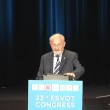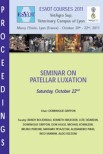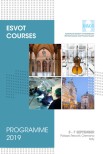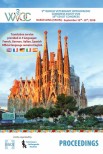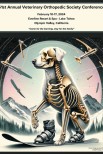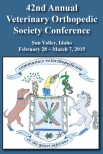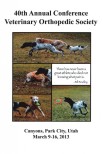
Hilary Clayton
Mary Anne McPhail Dressage Chair in Equine Sports Medicine
Professor, Large Animal Clinical Sciences Michigan State University
G.S-S. As I recall, you graduated from Glasgow and went to Michigan soon afterwards. I know that you already had particular experience with horses and you career has taken to both the Judging arena and into the research arena and laboratory. Could you give readers a synopsis of your career heretofore, please?
H.M.C. After graduating from Glasgow University in 1073, I spent two years in general practice in Scotland, before returning to Glasgow to take my PhD at the Veterinary School. After various short appointments, in 1982 I emigrated to Canada to teach anatomy at the Western College of Veterinary Medicine at the University of Saskatoon, later becoming Professor and Chair of the Department. In 1997 I was offered the Mary Anne McPhail Dressage Chair in Equine Sports Medicine at Michigan State University.
G.S-S. I believe that you had been an FEI judge for some years and now have International status – not quite - I had a judge’s card when I lived in Canada but gave it up when I moved to the US.
H.M.C. I have always ridden and trained horses and have competed in many equestrian sports including eventing, show jumping, dressage, polo, combined driving, endurance racing and cutting. I still compete regularly in dressage competitions up to Grand Prix level riding horses bred at the MSU Horse Farm.
G.S-S.Where has your experience in above conjoined fields led your research?
H.M.C. (Locomotion etc?) I was interested in the horse as an athlete and in understanding the biomechanics and physiology of different equestrian sports. I was one of the early members of the Association for Equine Sports Medicine and over the years I have been lucky to have had opportunities to follow my passion by pursuing a career in sports medicine and specifically biomechanics of athletic horses.
It’s been a very interesting era to work in biomechanics. When I started, high speed cinematography was the ‘technique du jour’. It was a very tricky technique to use not to mention tedious and time-consuming to get meaningful results. What used to take literally days and weeks to do manually is now done in real-time by a computer. So the computer has greatly facilitated this type of research. I have enjoyed watching these changes unfold and being involved in the evolution of the age of technology.
In the meantime, I’m still riding and have been able to benefit from the results of my research in training my own horses.
G.S-S.Is there a particular area that you feel is paramount in the current treatment of equine lameness and other conditions that you wish to see developed?
H.M.C.I’m very interested in equine physical therapy and rehabilitation. I think there are many applications both in improving athletic performance and in rehabilitating horses after surgery or disease. There is a lack of evidence-based research in this field and this is one of my current areas of research focus. When you look at how much people benefit from physical therapy after orthopaedic surgery, it seems only natural to try to take these benefits to the equine field.
Our current investigations in this area are looking at dynamic mobilization exercises and proprioceptive stimulation techniques. The mobilization exercises I’m investigating are baited stretches that involve specific types of cervical flexion and cervical bending. The results show that regular performance of these exercises not only increases spinal (cervical and thoracic) range of motion but, perhaps more importantly, appears to activate and strengthen the deep spinal musculature that’s crucial for stabilization of the intervertebral joints during locomotion.
The proprioceptive stimulation exercises are used to facilitate and strengthen specific muscles. We have recently completed a study that compares the kinematic and kinetic effects of lightweight tactile stimulators that brush against the skin and act via stimulation of mechanoreceptors versus leg weights that have an inertial effect. The two types of stimulators both result in a higher flight arc of the hoof due to increased joint flexions and both stimulate increased concentric activity in the tarsal musculature but only the leg weights also stimulate the hip musculature. So we have some data that can be used to target specific muscle groups during physical therapy. The next stage will be to monitor the effects of these and other techniques, in clinical cases.
I’m a founding member of the organizing committee of the American College of Veterinary Sports Medicine and Rehabilitation which recently received provisional recognition from the AVMA Executive Board. I believe the time is right to develop this specialty area in veterinary medicine and am excited about the prospect of moving forward to establish training and examination procedures for this new veterinary specialty.
Other areas that are of special interest to me are the rider-horse interaction and the biomechanics of equine sporting performance. I use a combination of techniques in these investigations including motion analysis, an array of force plates, an electronic saddle pressure mat and rein tension sensors. Knowledge of these areas benefits veterinarians by providing additional information about the aetiology of injuries and benefits judges, trainers and riders by giving scientifically-based guidance about management and training of athletic horses. I also wear yet another hat as a member of the US Equestrian Federation’s Dressage Committee which governs the sport of dressage in the US.



